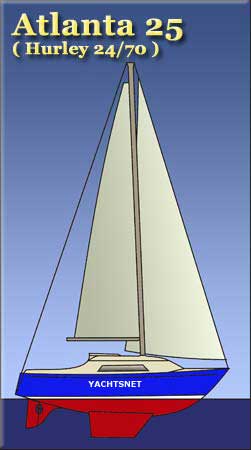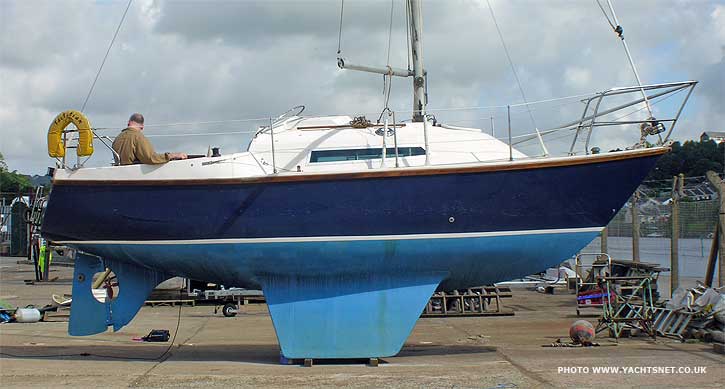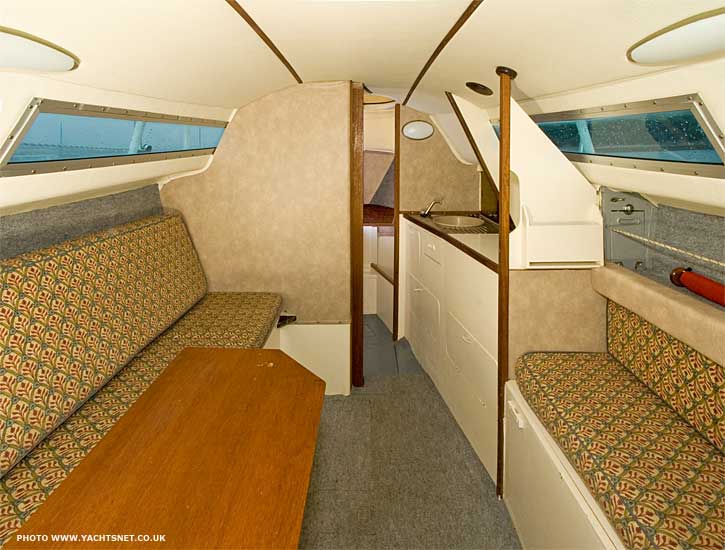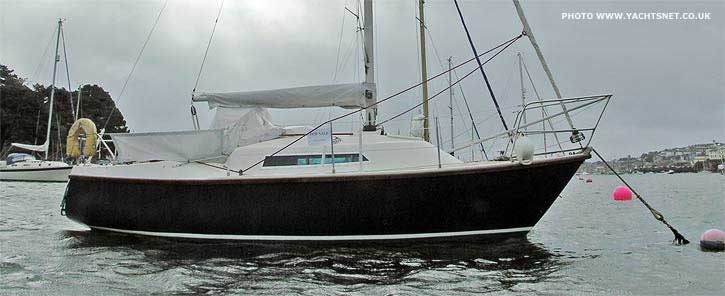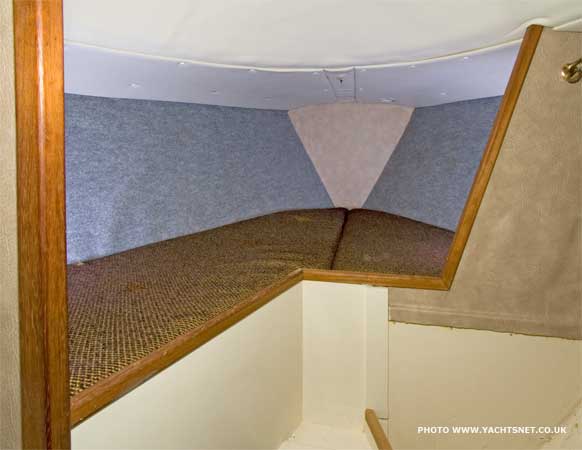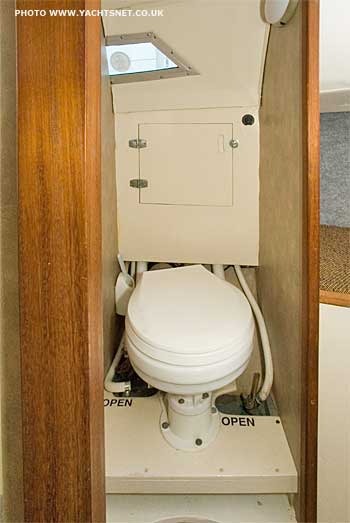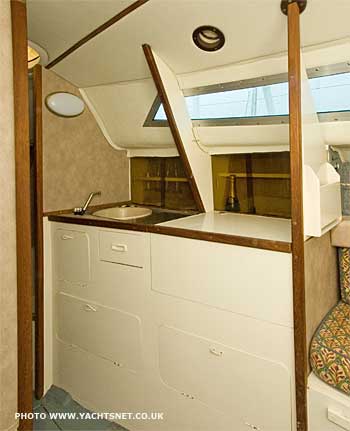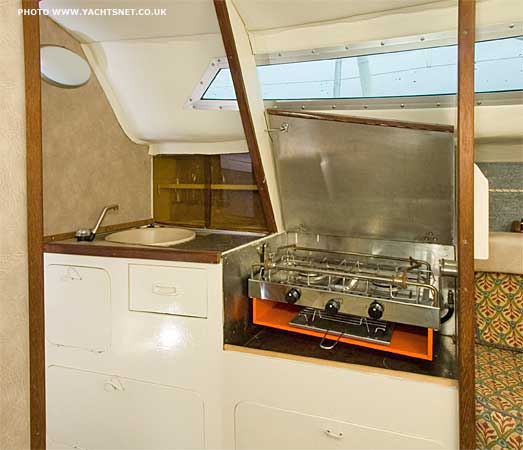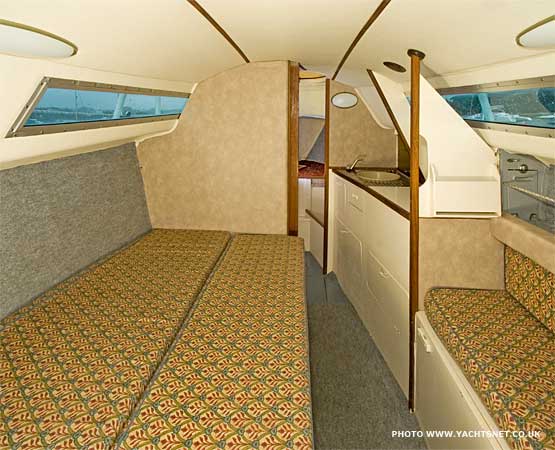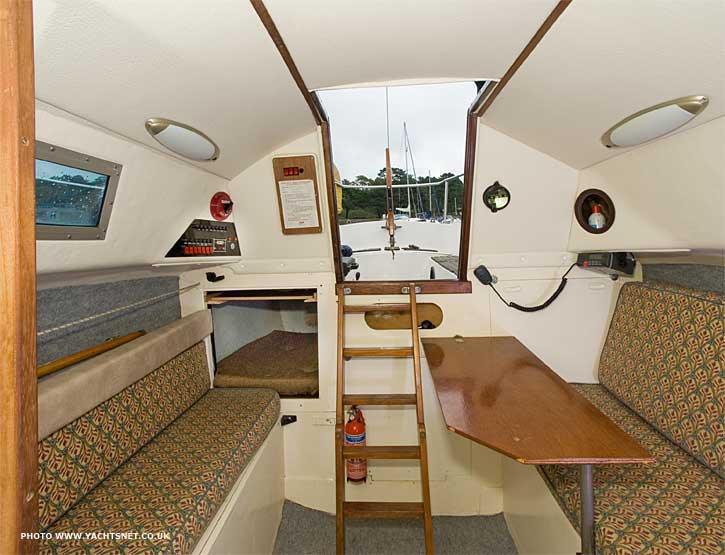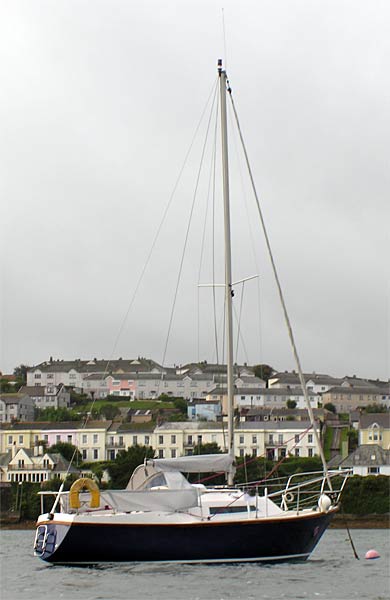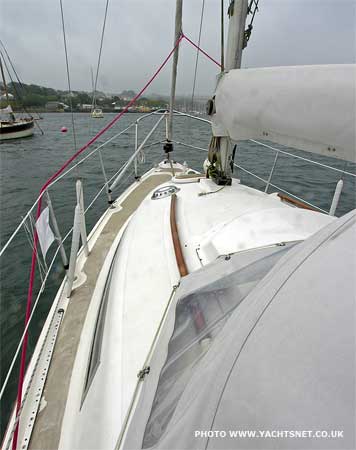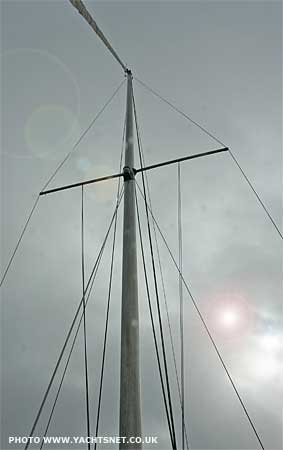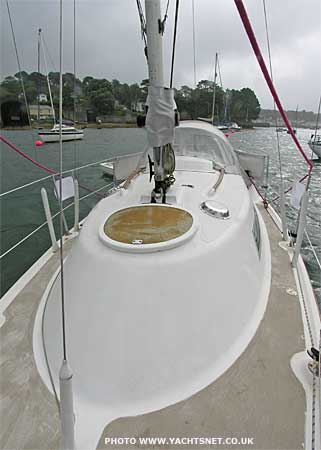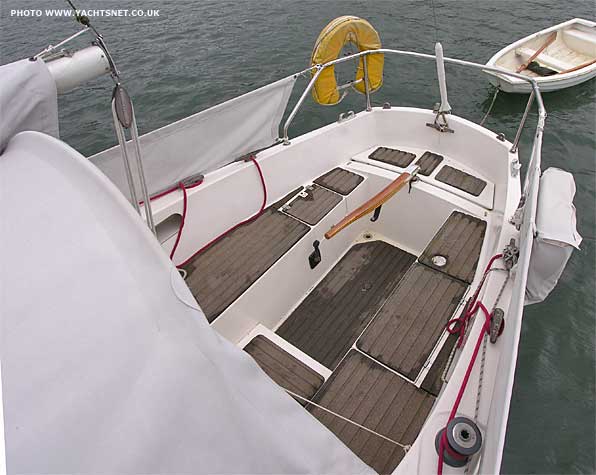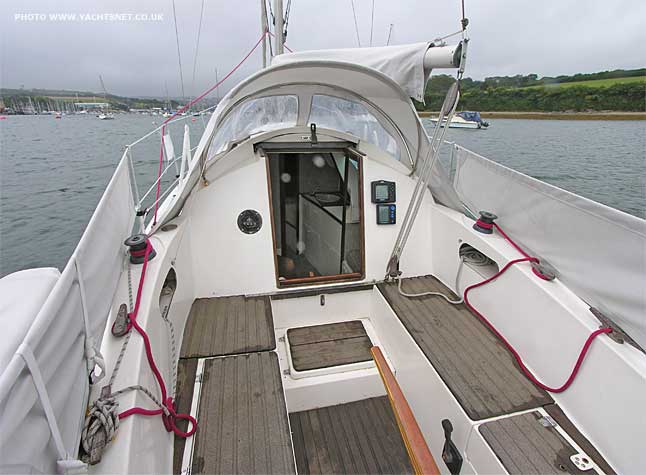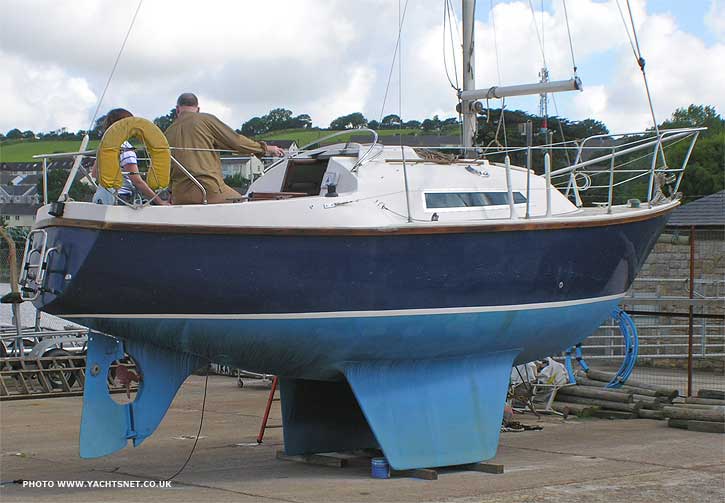| |
|
|
|
|
|
|
|
|
| © Yachtsnet Ltd. 2000/2025 |
|
|
|
| |
|
|
Yachtsnet's
archive of boat details and pictures
|
| |
The following information and photographs are
displayed as a service to anyone researching yacht types. HOWEVER THE PHOTOGRAPHS AND TEXT ARE COVERED BY COPYRIGHT, AND MAY NOT BE REPRODUCED WITHOUT THE PERMISSION OF YACHTSNET LTD. Details and photographs
are normally based on one specific yacht, but could be a compilation.
No reliance should be placed on other yachts of the same class being
identical. Where common variations exist, we have endeavoured
to indicate this in these archive details. |
Atlanta 25
|
Brief details |
Builder |
Atlanta Marine |
Based on the Hurley
24/70 design, the Atlanta 25 is a small cruiser with four six foot
long berths, six foot headroom in the saloon, and the ability to
create a double berth if required. |
LOA |
24' 9" |
Sail area |
235 sq ft main & working jib
|
LWL |
17' 6" |
Rig |
sloop |
Beam |
7' 5" |
Cabins |
2 |
Draught |
3' 11" bilge keel or 4' 1" fin keel |
Berths |
4 |
Displacement |
5,040 lbs |
Engine |
mostly inboard |
Ballast |
2,500 lbs |
BHP |
5 - 12 |
Keel type |
Usually twin bilge keels with skeg-hung rudder. Some fin keel boats also built. |
| |
Ian Anderson designed the Hurley 24/70 for
Hurley Marine in 1972, as a larger version of the long-running
and very successful Hurley 22, but with a more modern look,
and in particular, with more headroom. He also switched from
the long keel of the earlier Hurley designs to a more modern
fin and skeg configuration. Most Hurley 24/70s were inboard
engined, with a 5 hp Petter diesel, but some were outboard-powered.
When Hurley went out of business in 1974 the mouldings of
the Hurley 24/70 were taken over by Atlanta Marine, who marketed
the yacht as the Atlanta 24, and later cut the hull mould
amidships and stretched it from 23' 9" to 24' 9"
to make the Atlanta 25.
|
There is in practice little difference between
the Hurley built H24/70s and the Atlanta 24s and 25s. All
are solidly built small cruisers with good sailing performance
(the bilge keel versions are almost the same draught as the fin-keelers),
plus good accommodation for the size of boat. Despite the
roomy interior, the cockpit is also surprisingly spacious
for a boat of just under 24 feet long.
The rig has a very high aspect main, and a large genoa,
which combined with a low static wetted area, and relatively
long overhangs increasing the waterline length when heeled,
and a high ballast ratio, gives good sailing performance.
The fin keel versions have a swept back long fin keel, and
the bilge-keelers have splayed twin keels of the same draught. |
|
|
|
